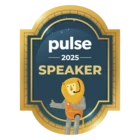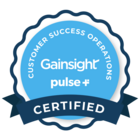What are your top 3-5 metrics for measuring Customer Health?
We don’t use Gainsight CS yet (hopefully down the road). We’re just getting our feet under us in a reorganized/refocused CX org under a new Chief Customer Officer.
Our historical way of measure customer health relies on a lot of subjective data and qualitative inputs.
We’re looking to switch to tangible, quantitative metrics that remove subjectivity.
Customer Health will be one side of the coin, sentiment (NPS) will be the other.
Industry: B2B SaaS
SaaS: app-building platform

